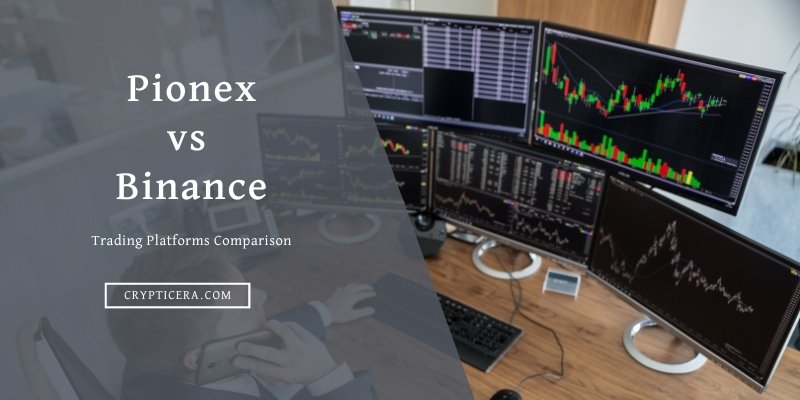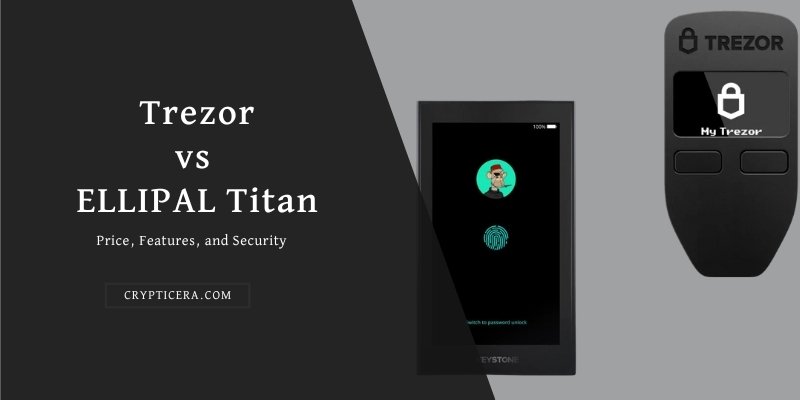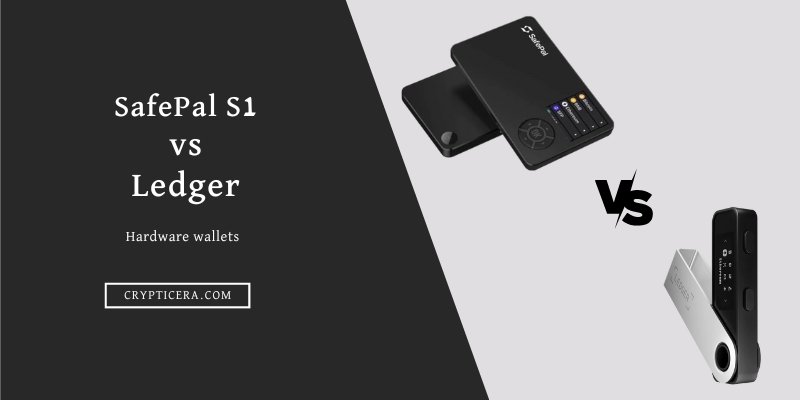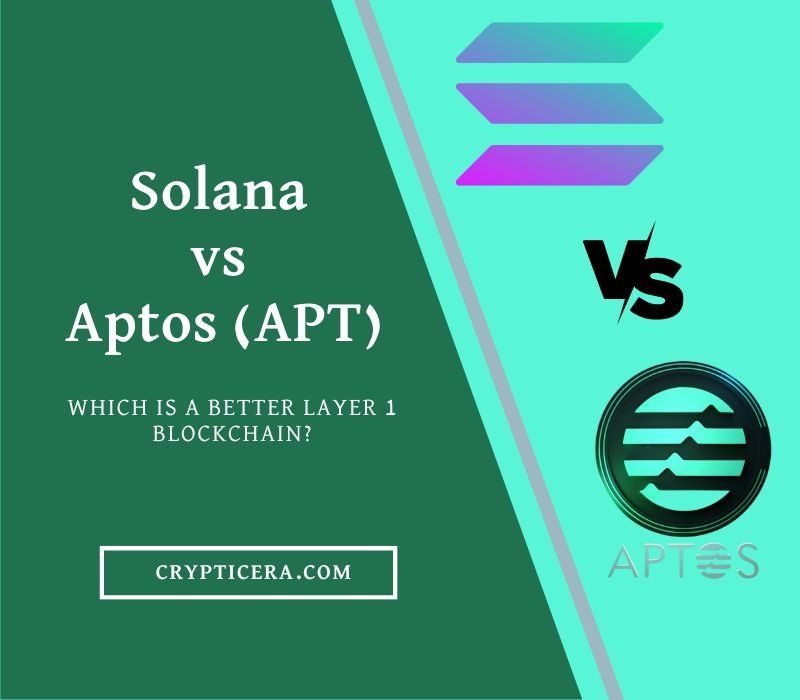Are you ready to enter the world of cryptocurrency trading? If so, you might be wondering which exchange to use. Two of the most popular platforms available are Pionex and Binance. Both have unique features that attract traders from all over the world, but which one is right for you?
In this blog post, we’ll explore the similarities and differences between “Pionex vs Binance”, and help you decide which platform to use for your trading needs.
Pionex is a relatively new exchange that was launched in 2019. It’s known for its user-friendly interface, low trading fees, and algorithmic trading bots. One of the unique features of Pionex is its “Grid Trading Bot,” which allows traders to set up a grid of buy and sell orders at predetermined price points.
Binance was founded in 2017 and has since become a household name in the crypto community. It offers a wider selection of trading pairs than Pionex, including more obscure cryptocurrencies. It also has its own native token, Binance Coin (BNB), which can be used to pay trading fees at a discounted rate.
So, which platform is right for you? It ultimately depends on your trading goals and preferences. If you’re a beginner looking for a user-friendly interface and low fees, Pionex might be the better choice. If you’re a more experienced trader looking for a wider selection of trading pairs and advanced trading features, Binance might be the way to go.
Quick Verdict: Pionex is better for Automated Trading bots, while Binance has more features including Dual Investment, Liquidity mining, copy trading, and 500+ trading pairs.
Pionex and Binance: The Complete Comparison
- Trading Platform Features: Spot, Futures, Trading bots, Staking, Loan, copy trading
- Trading Fees: 0.05% per trade (both Maker/taker)
- Supported Cryptocurrencies: 263
- Fiat Supported: USD, EUR
- Payment Methods: SEPA, Express card
Pros
- 16+ free Automated trading bots
- Low trading fees compared to Binance
- User-friendly interface for beginners
- Spot, Futures, Margin Trading
Cons
- Limited deposit options
- Limited trading pairs compared to larger exchanges
- Not regulated in most countries

- Trading Platform Features: Spot and Futures, Margin Trading, Leveraged Token, Dual Investment
- Trading Fees: 0.1% maker, 0.1% Taker Fees (30% BNB discount)
- cryptocurrencies supported: 350+
- Fiat Supported: EUR, GBP, BRL, and +8 more (currently USD not supported)
Pros
- Advanced trading tools and charting features
- High liquidity and Volume
- 100% solvent
- Strong security measures
Cons
- Regulatory uncertainty in some countries
- Limited payment options (No USD Payment provider)
Pionex vs Binance: Similarities and Differences
When it comes to trading volume, Binance has a much larger volume of $2+ billion compared to Pionex’s $200+ million. Binance also supports over 380 coins, while Pionex supports 230+. In terms of fees, Pionex charges 0.05% – 0.1%, while Binance charges 0.1% – 0.2% (which can be lowered with Binance’s BNB token).
Both exchanges have strong security measures, including two-factor authentication and anti-phishing measures, but Binance also has the SAFU (Secure Asset Fund for Users) to protect users in the event of a hack. Customer support is available 24/7 on both platforms, but Binance also offers phone support in addition to online chat and email.
Both exchanges have mobile apps for convenient trading. Pionex and Binance support over 100 and 190 countries, respectively. Binance has a much larger user base with over 15 million active users compared to Pionex’s 100,000.
| Pionex | Binance | |
|---|---|---|
| Year Founded | 2019 | 2017 |
| Trading Volume | $200+ million | $2+ brillion |
| Number of Coins | 230+ | $2+ billion |
| Fees | 0.05% – 0.1% | 0.1% – 0.2% (lower with BNB) |
| Security | Two-factor authentication, email notifications, and cold storage for assets | Two-factor authentication, anti-phishing measures, and SAFU (Secure Asset Fund for Users) |
| Customer Support | 24/7 online chat support and email | 24/7 online chat support, email, and phone support |
| Mobile App | Yes | Yes |
| Countries Supported | Over 100 | Over 190 |
| Active Users | Over 100,000 | Over 15 million |
| Rating | ⭐⭐⭐⭐ | ⭐⭐⭐⭐⭐ |
| Pionex Review | Binance Review |
Pionex vs Binance: Trading Platform Features
Both platforms support advanced charting tools, margin trading, futures trading, spot trading, stop-limit orders, market orders, and limit orders.
Binance offers additional features such as OCO orders, copy trading, fiat gateway, staking, and earning rewards, which are not available on Pionex. However, Pionex supports 16+ built-in trading bots for automated trading.
| Trading Platform Features | Pionex | Binance |
|---|---|---|
| Advanced Charting Tools | ✔️ | ✔️ |
| Margin Trading | ✔️ | ✔️ |
| Futures Trading | ✔️ | ✔️ |
| Spot Trading | ✔️ | ✔️ |
| Stop-Limit Orders | ✔️ | ✔️ |
| Market Orders | ✔️ | ✔️ |
| Limit Orders | ✔️ | ✔️ |
| OCO Orders | ❌ | ✔️ |
| Trading Bots | ✔️ | ❌ |
| Copy Trading | ❌ | ✔️ |
| Fiat Gateway | ❌ | ✔️ |
| Staking | ✔️ | ✔️ |
| Earn Rewards | ❌ | ✔️ |
| Trading Education | ✔️ | ✔️ |
Pionex Trading bots Explained
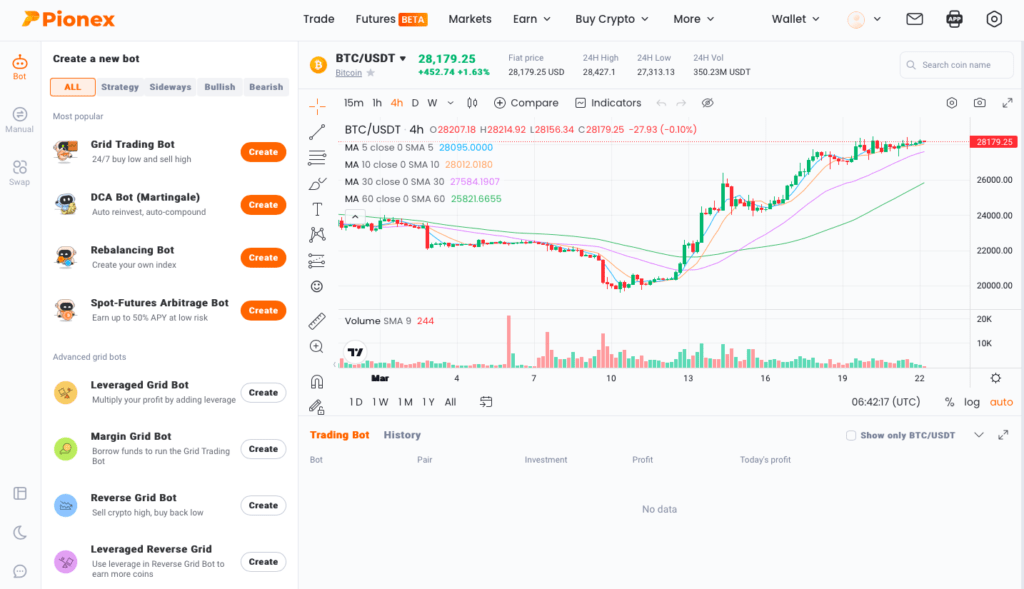
- Grid Trading Bot – buys low and sells high within a set price range.
- Infinity Grids Bot – similar to Grid Bot but with no upper price limit.
- Leveraged Grid Bot – uses leverage to increase potential profits.
- Reverse Grid Bot – buys high and sells low within a set price range.
- Margin Grid Bot – uses margin trading to increase potential profits.
- TWAP Bot – buys and sells at a specific time interval to average out prices.
- Accumulation Bot – buys small amounts of a coin over time to average out prices.
- Trailing Take Profit Bot – sets a trailing stop loss to maximize profits.
- Dollar-Cost Averaging Bot – buys a set amount of a coin at regular intervals.
- Sniper Bot – waits for a price drop before making a purchase.
- Spot-Futures Arbitrage Bot – exploits price differences between spot and futures markets.
Read: Best Free Crypto Trading Bots and Best GRID Trading Bots
Pionex vs Binance: Supported Cryptocurrencies
Pionex currently supports over 230 cryptocurrencies, including major coins such as Bitcoin, Ethereum, Ripple, and Litecoin, as well as a range of altcoins and DeFi tokens.
In comparison, Binance supports over 280 cryptocurrencies, including major coins and a wide range of altcoins and NFT tokens. Additionally, Binance frequently adds support for new coins and tokens, allowing traders to access a broader range of assets.
Pionex and Binance: Platform Fees
- Spot Trading Fees: Pionex charges a flat fee of 0.05% – 0.1% per trade, depending on the user’s trading volume. Binance charges a flat fee of 0.1% per trade, which can be lowered to 0.075% with Binance’s native token (BNB).
- Futures Trading Fees: Pionex and Binance both charge a maker fee of 0.02% and a taker fee of 0.04% for futures trading.
- Trading Bots Fees: Pionex offers free access to its trading bots, with the option to upgrade to premium bots for a fee. Binance only offers basic trading bots like GRID and DCA bots.
Pionex vs Binance: Security Measures
Pionex and Binance both employ various security measures to protect user assets and data. Some of these measures include:
- Two-factor authentication (2FA) for account login and withdrawals
- Anti-phishing codes for email communications
- SSL encryption for web traffic
- Cold storage for storing a significant portion of user assets offline
- Insurance funds to cover any losses due to hacks or other security breaches
In addition to these measures, Binance has also implemented several additional security features, such as:
- SAFU (Secure Asset Fund for Users) to protect user funds in the event of a hack or other security breach
- Address whitelisting, allowing users to restrict withdrawals to approved addresses
- Withdrawal confirmations via email
Binance has also been proactive in addressing security concerns and improving its security measures in response to past incidents.
Mobile App and Ease of Use
Both Pionex and Binance offer mobile apps for iOS and Android devices, allowing users to trade. The apps offer similar features to their web counterparts, including spot, futures, and margin trading, as well as access to charts and other trading tools.
Both Platforms have user-friendly interfaces, with intuitive navigation and clear labeling of features. However, Binance’s interface can be more complex and overwhelming for beginners, particularly with the range of advanced trading features and options available.
They offer educational resources to help users understand cryptocurrency trading and the various features offered on their platforms. Pionex offers trading education through its Pionex Academy, while Binance provides a range of resources, including tutorials, webinars, and guides.
Pionex or Binance: Customer Support
Pionex and Binance offer customer support through similar channels, including email support, live chat, and social media. Binance also offers phone support, which Pionex currently does not.
They both strive to provide timely customer support, with response times generally ranging from a few hours to a few days, depending on the volume of requests. However, both platforms have received criticism for slow response times during periods of high demand or technical issues.
There are additional resources for users to troubleshoot issues and find answers to common questions, including FAQs, knowledge bases, and community forums.
Final Thoughts: Which is better?
If you’re looking for a platform with a strong focus on automated trading bots and a simplified user interface, Pionex may be the better choice for you. On the other hand, if you’re looking for a more comprehensive trading platform with a wide range of features, a larger user base, and additional security measures, Binance may be the way to go.
Both platforms offer mobile apps, educational resources, and customer support, but Binance has an edge in terms of its more advanced trading features, additional security measures, and larger resources for customer support.
FAQs
How do I connect my trading bot to Binance?
To connect your trading bot to Binance, you will need to create an API key on your Binance account and use it to configure your bot’s settings. Each trading bot has its own specific instructions for how to connect to Binance, so it’s important to follow the instructions provided by the bot’s developer.
What is the difference between Pionex and Binance?
Pionex is a cryptocurrency exchange that specializes in offering trading bots to its users, while Binance is a larger cryptocurrency exchange that offers a wider range of trading tools and features, including its own basic bot for auto-averaging. Pionex is also known for its low trading fees and its focus on making trading bots accessible to novice traders, while Binance is better known for its advanced trading features and larger user base.
Is Pionex or Binance Safe to Use?
Both Pionex and Binance implement a range of security measures to protect user accounts and funds, including two-factor authentication, withdrawal limits, and cold storage of funds. Additionally, they both comply with relevant regulations and have undergone security audits to ensure the safety of their platforms.
Here are more comparisons of better Exchanges and Trading bots:
